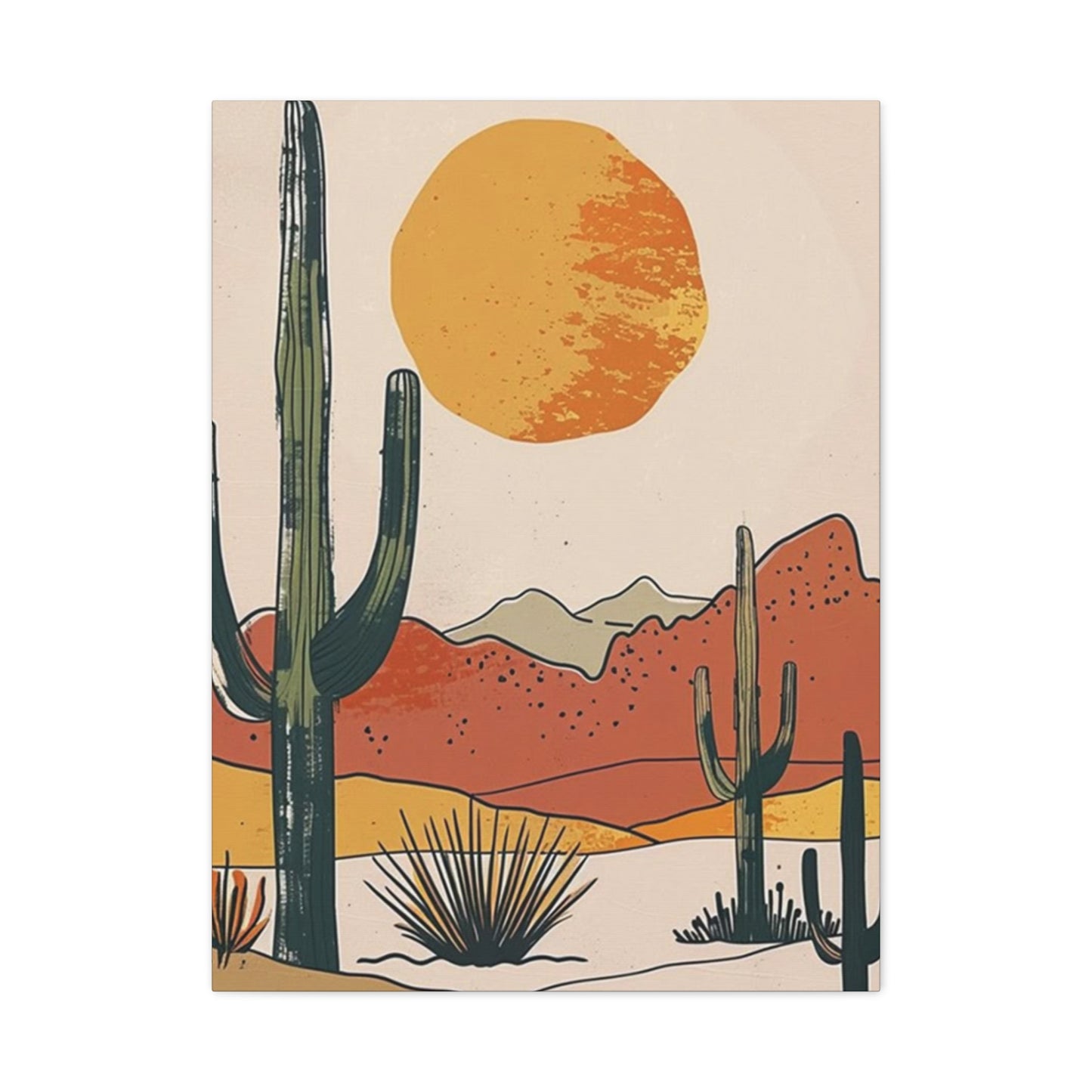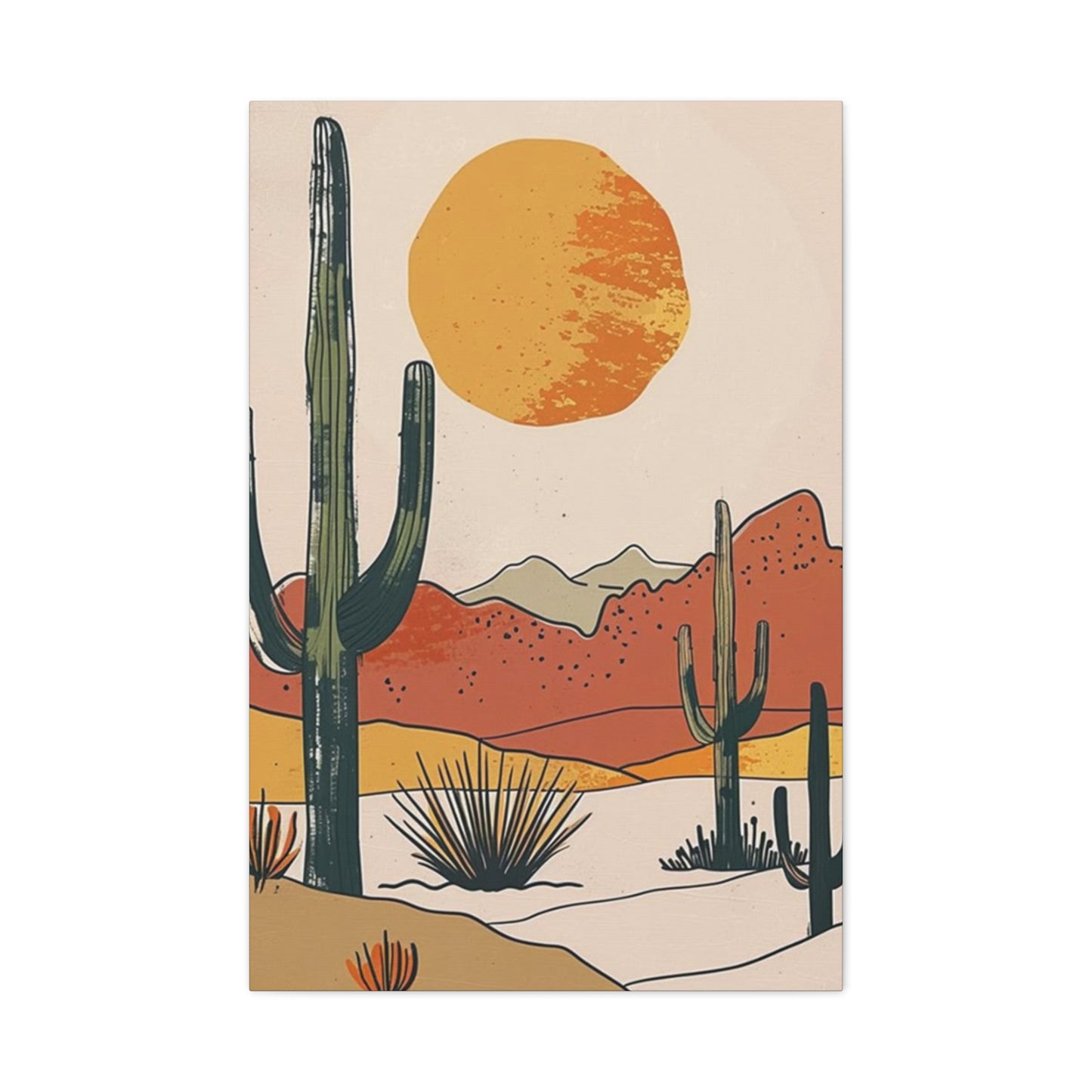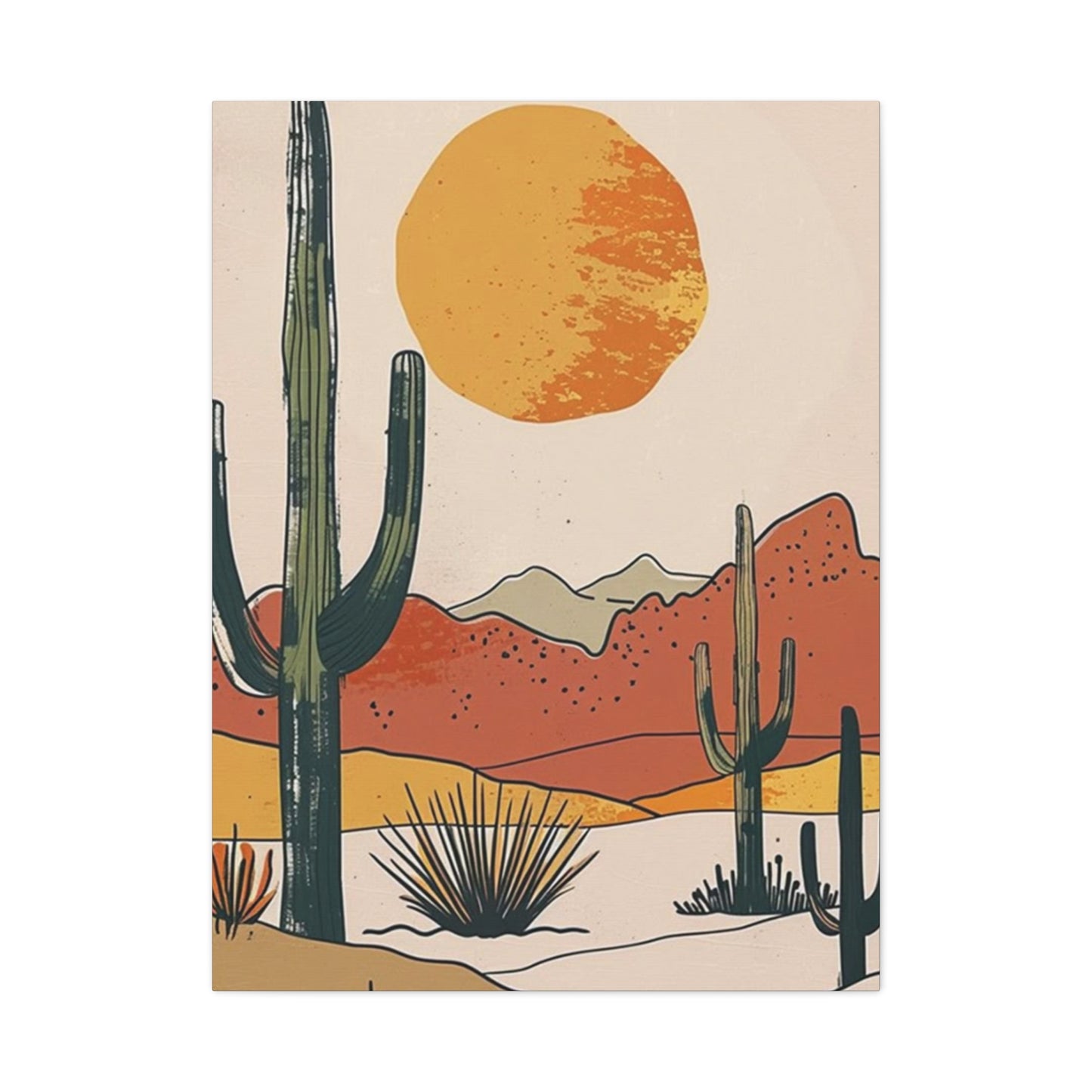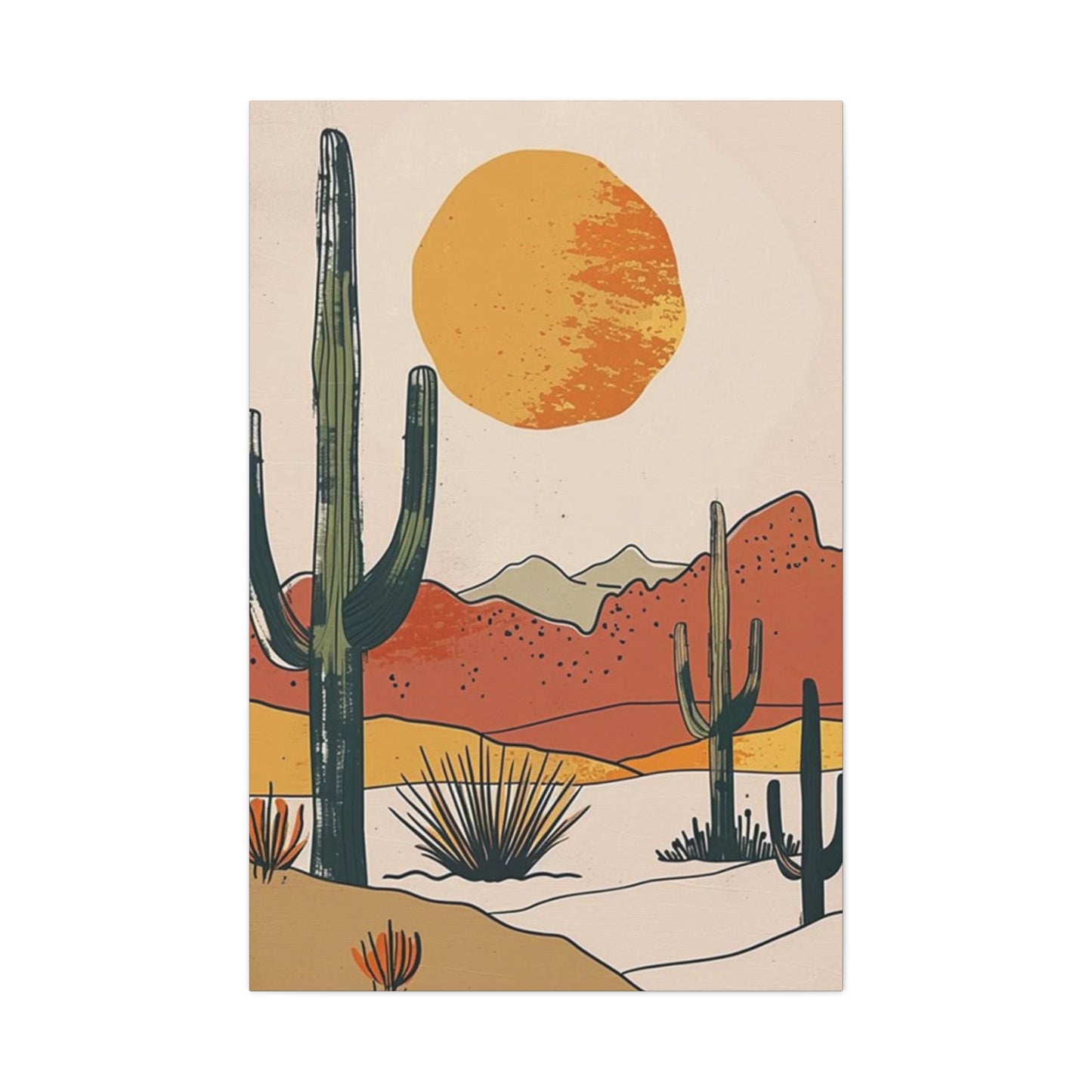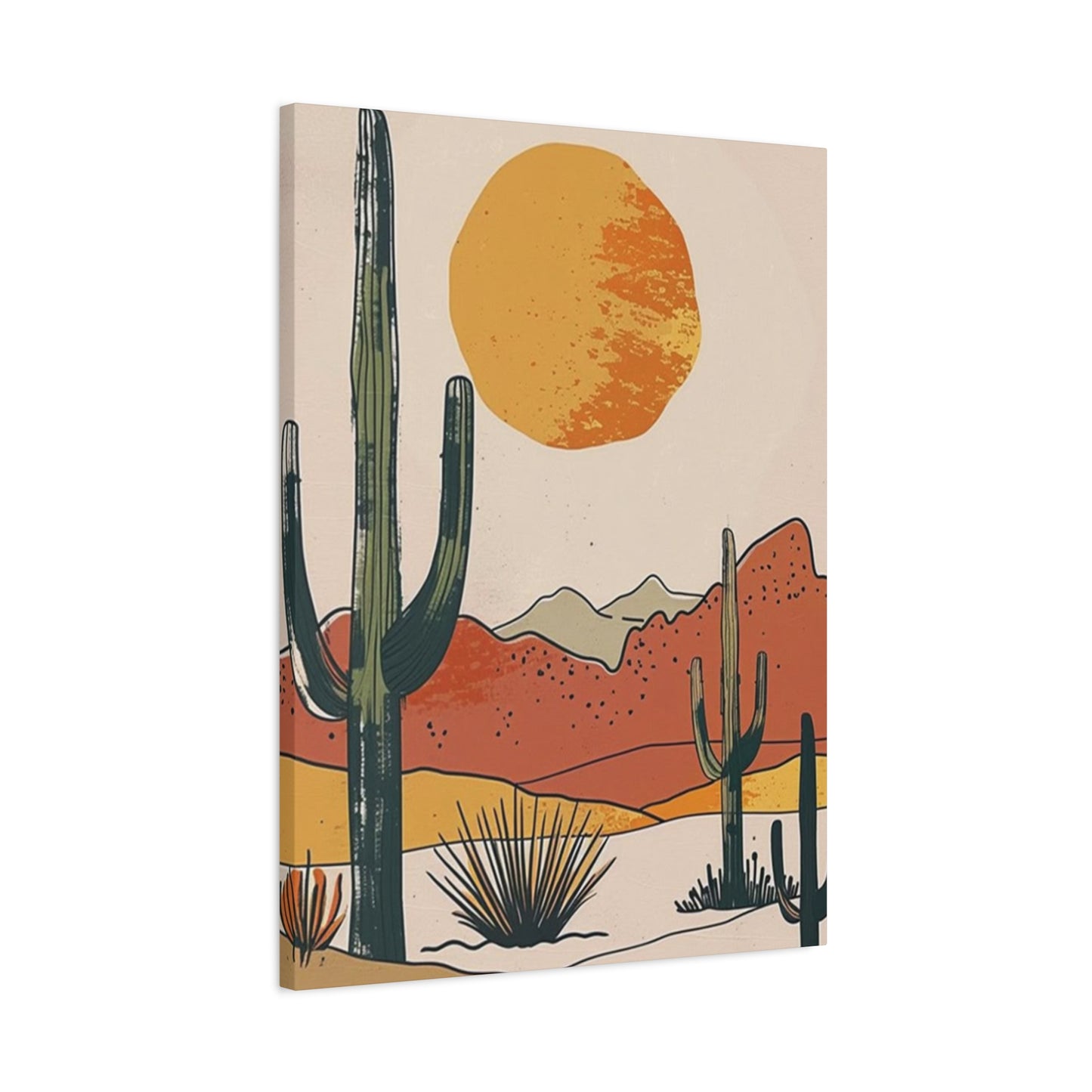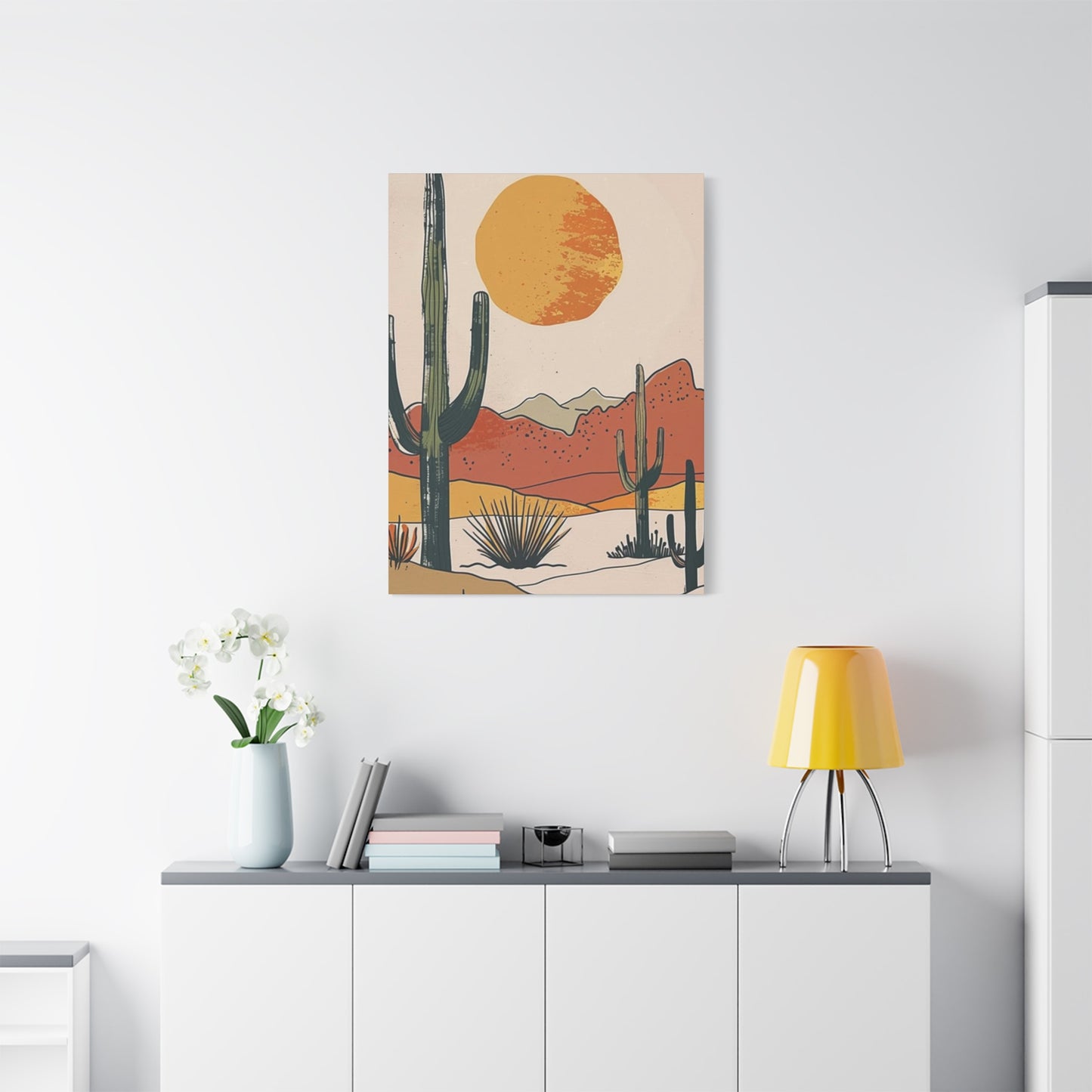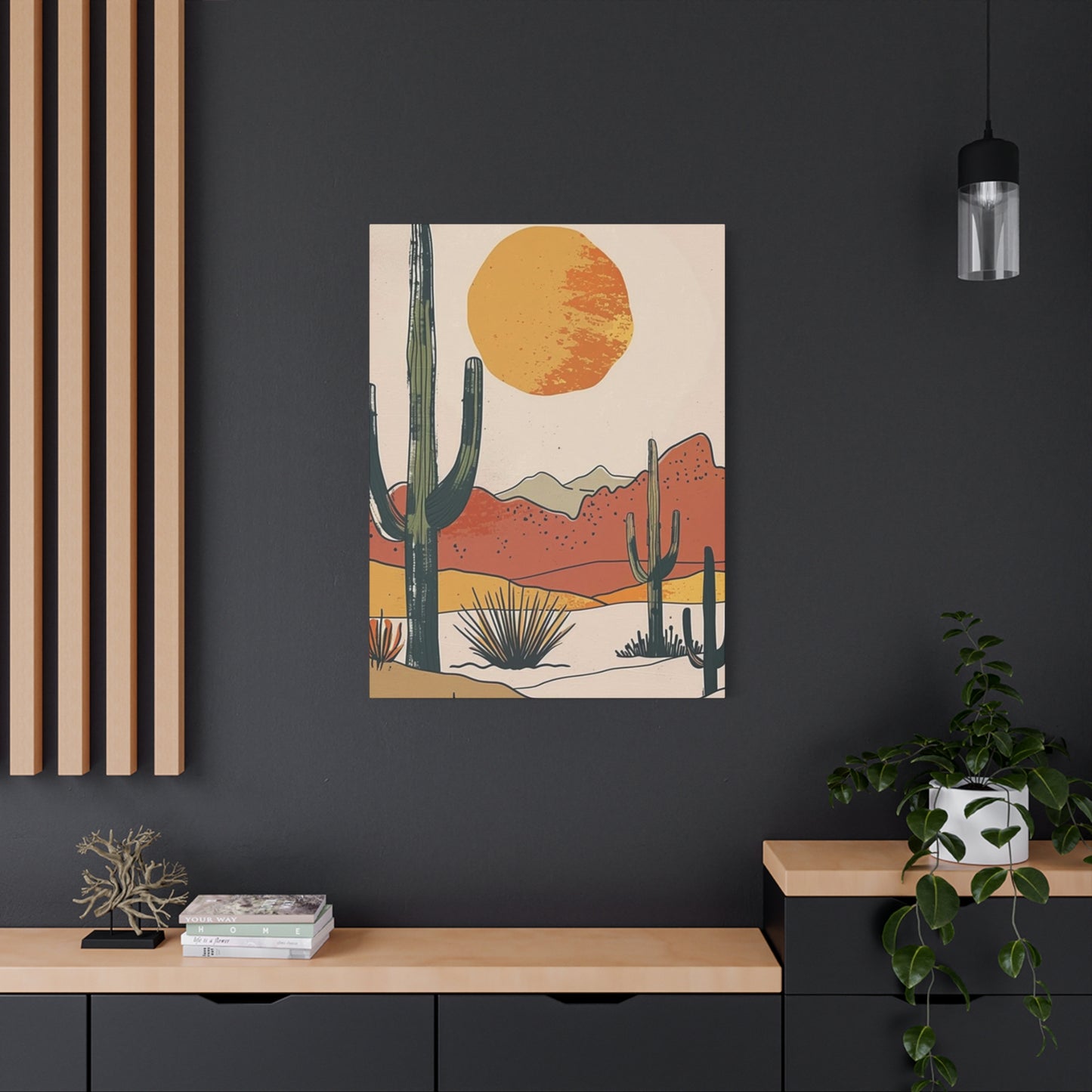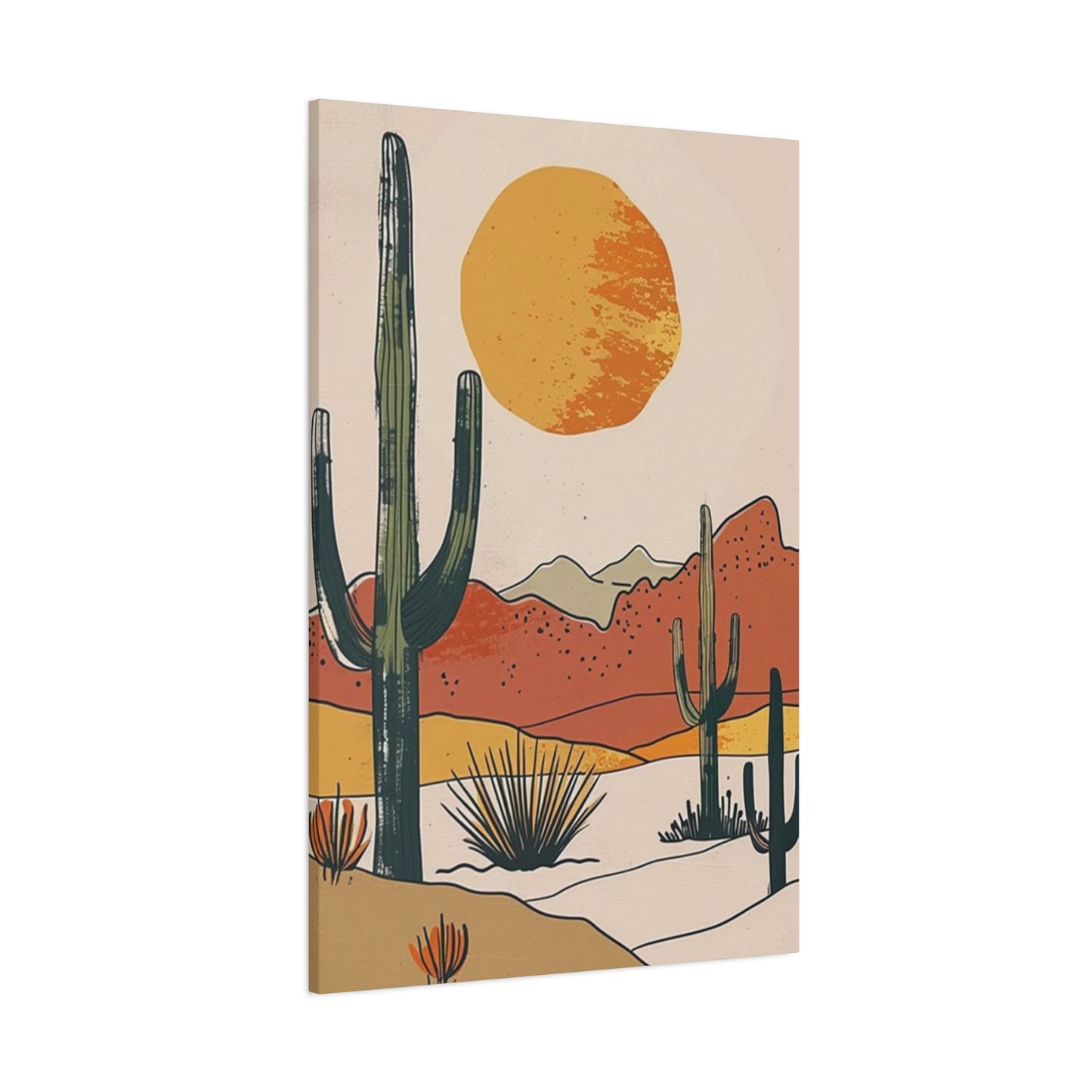Arizona Desert Wall art: Beautiful Cactus and Mountain Drawings
The mesmerizing landscapes of Arizona have captivated art enthusiasts and interior designers for generations. From towering saguaro cacti silhouetted against crimson sunsets to rugged mountain ranges painted in earth tones, Arizona's desert terrain offers endless inspiration for wall art that transforms living spaces into havens of southwestern elegance. This comprehensive exploration delves into the world of Arizona desert wall art, examining how these stunning pieces can elevate your home's aesthetic while celebrating the raw beauty of America's desert southwest.
Arizona's desert landscape represents one of nature's most striking artistic compositions. The interplay of light and shadow across ancient rock formations, the dramatic contrast between delicate wildflower blooms and hardy desert vegetation, and the ever-changing palette of colors throughout different seasons create a visual feast that translates beautifully into wall art. Whether you're drawn to the stark minimalism of desert scenes or the vibrant energy of southwestern color schemes, Arizona-inspired wall art offers something for every taste and decorating style.
The appeal of desert-themed wall art extends far beyond simple aesthetic pleasure. These pieces connect us to the primal beauty of untouched landscapes, bringing a sense of tranquility and groundedness into our homes. In our increasingly digital world, desert wall art serves as a reminder of nature's enduring power and beauty, offering viewers a moment of peaceful contemplation amidst the chaos of modern life.
Arizona Desert Canvas Collections
Canvas prints featuring Arizona's desert landscapes have become increasingly popular among homeowners seeking to incorporate natural beauty into their interior design. These high-quality reproductions capture every detail of the desert's intricate ecosystem, from the waxy surface of barrel cacti to the weathered texture of ancient rock formations. Arizona desert canvas collections typically feature a diverse range of subjects, including iconic saguaro cacti, blooming palo verde trees, dramatic sunrise and sunset scenes, and sweeping vistas of the Sonoran Desert.
The versatility of canvas as a medium makes it particularly well-suited for desert artwork. The texture of canvas complements the rugged, organic nature of desert landscapes, while modern printing techniques ensure that colors remain vibrant and true to the original photography or artwork. Many Arizona desert canvas pieces are available in multiple sizes, allowing homeowners to create stunning gallery walls or choose single statement pieces that serve as focal points in their rooms.
Professional photographers and artists who specialize in Arizona desert scenes often spend years perfecting their craft, learning to capture the subtle nuances of desert light and the unique character of different desert plants and formations. Their expertise shines through in canvas collections that showcase not just the obvious beauty of iconic desert landmarks, but also the hidden gems and intimate details that make the Arizona desert so compelling.
Canvas prints offer several advantages over traditional framed artwork. They're generally more affordable than original paintings or limited-edition prints, making high-quality desert art accessible to a broader audience. Additionally, canvas prints are lightweight and easy to hang, requiring no additional framing or matting. The wrap-around edges of gallery-wrapped canvas create a finished, professional appearance that works well in both casual and formal settings.
When selecting Arizona desert canvas art, consider the color palette of your existing decor. Many desert scenes feature warm earth tones like terracotta, sage green, dusty rose, and golden yellow, which complement both neutral and boldly colored interiors. The natural colors found in desert landscapes have an inherent harmony that makes them easy to incorporate into various decorating schemes.
The emotional impact of Arizona desert canvas art should not be underestimated. These pieces have the power to transform a room's atmosphere, creating a sense of calm and connection to nature. The expansive vistas common in desert photography can make small rooms feel larger, while intimate close-ups of desert flora add texture and interest to any wall.
Cactus Mountain Wall Art Designs
The combination of cacti and mountain backdrops represents one of the most iconic and beloved themes in southwestern wall art. Cactus mountain wall art designs capture the essence of Arizona's diverse topography, where ancient mountain ranges provide dramatic backdrops for forests of towering saguaro cacti and clusters of prickly pear and barrel cacti. These compositions create stunning visual narratives that speak to the resilience and beauty of desert ecosystems.
Saguaro cacti, with their distinctive arm formations and impressive heights reaching up to 40 feet, serve as natural sculptures against the backdrop of Arizona's mountain ranges. Wall art featuring these majestic plants often emphasizes their anthropomorphic qualities, with arms raised toward the sky in gestures that seem almost human. The interplay between the vertical lines of the cacti and the horizontal or diagonal lines of distant mountains creates dynamic compositions that draw the eye and hold attention.
Artists and photographers working in this genre often focus on the golden hour lighting that occurs during sunrise and sunset, when the warm light illuminates both cacti and mountains with a magical glow. This lighting creates dramatic silhouettes and enhances the natural colors of the desert landscape, resulting in wall art that captures the most photogenic moments of desert life.
The variety of cactus species found throughout Arizona provides artists with an extensive palette of forms and textures to work with. Beyond the famous saguaro, Arizona's desert landscape includes organ pipe cacti, teddy bear cholla, fishhook barrel cacti, and numerous other species, each with its own unique character and visual appeal. Wall art that showcases this diversity helps viewers appreciate the complexity and richness of desert ecosystems.
Mountain ranges featured in Arizona desert art include the iconic Superstition Mountains, the rugged Catalina Mountains, and the distinctive silhouette of Camelback Mountain. Each range has its own character and geological story, contributing to the overall narrative of the artwork. Some pieces focus on the contrast between the ancient, weathered mountains and the relatively young saguaro cacti (which can live for over 200 years), creating a dialogue between different timescales in natural history.
Modern cactus mountain wall art often incorporates contemporary design elements while respecting the timeless beauty of the desert landscape. Minimalist approaches might focus on simple silhouettes and clean lines, while more detailed pieces celebrate the intricate textures and patterns found in both cacti and rock formations. The key is finding pieces that resonate with your personal aesthetic while honoring the authentic character of the Arizona desert.
Color palettes in cactus mountain wall art typically draw from the natural colors of the desert, but artists often enhance or stylize these colors to create more dramatic or harmonious compositions. Sunset scenes might emphasize warm oranges, deep purples, and golden yellows, while midday scenes might focus on the cooler blues and greens found in desert shadows and distant mountains.
Southwest Desert Prints Selection
Southwest desert prints encompass a broader category of artwork that includes not only Arizona's landscapes but also the diverse desert regions of New Mexico, Utah, Nevada, and California. This expanded geographical scope allows for a rich variety of desert scenes, plant life, and geological formations that can complement Arizona-specific artwork or stand alone as compelling decorative elements.
The printmaking process itself adds another layer of artistic interpretation to desert imagery. Whether created through traditional techniques like lithography and screen printing or modern digital processes, prints often have a distinctive quality that sets them apart from photographs or paintings. The slightly stylized nature of many prints can enhance the graphic qualities of desert landscapes, emphasizing patterns, textures, and compositions in ways that feel both authentic and artistic.
Limited edition southwest desert prints have become particularly sought after by collectors and interior design enthusiasts. These pieces often feature the work of renowned southwestern artists who have spent decades capturing the essence of desert landscapes. The limited nature of these prints adds to their value and exclusivity, making them conversation pieces that reflect the owner's appreciation for fine art and southwestern culture.
The subject matter of southwest desert prints is incredibly diverse. Some focus on the grand vistas and sweeping landscapes that define the American Southwest, while others zoom in on the intricate details of desert plants, rock formations, or wildlife. This variety allows homeowners to create cohesive collections that tell a complete story of desert life or to select individual pieces that serve specific decorative purposes.
Vintage-inspired southwest desert prints have gained popularity as part of the broader trend toward incorporating retro and nostalgic elements into contemporary interior design. These pieces often feature stylized representations of classic southwestern imagery, using color palettes and design techniques that evoke the golden age of American travel and national park promotion. The nostalgic quality of these prints can add warmth and character to modern homes.
Contemporary artists working in the southwest desert print medium often bring fresh perspectives to traditional subjects. Some incorporate abstract elements or experimental color schemes, while others focus on environmental themes or the changing relationship between human development and natural desert landscapes. These modern interpretations keep the genre vibrant and relevant to contemporary audiences.
The framing and presentation of southwest desert prints can significantly impact their visual effect and integration into home decor. Simple, clean frames often work best with graphic or minimalist prints, while more detailed or traditional pieces might benefit from frames that complement their colors or echo southwestern design elements. Matting choices can also enhance the artwork, with natural colors like cream, sage, or warm gray providing subtle enhancement without competing with the print itself.
Scenic Arizona Canvas Creations
Scenic Arizona canvas creations capture the state's most breathtaking landscapes in formats designed specifically for home display. These pieces go beyond simple photography to create artistic interpretations of Arizona's natural beauty, often incorporating elements of painting, digital enhancement, or mixed media to produce truly unique wall art.
The Grand Canyon, while not technically part of the Sonoran Desert, often appears in scenic Arizona canvas collections due to its iconic status and visual impact. Artists working with Grand Canyon imagery face the challenge of capturing the immense scale and complex colors of this natural wonder in a format suitable for residential display. Successful pieces often focus on specific aspects of the canyon – perhaps the interplay of light and shadow on the rock walls, the layered geological history visible in the canyon's stratigraphy, or the way morning mist creates mysterious atmosphere in the depths.
Antelope Canyon, with its flowing sandstone walls and dramatic light beams, provides another popular subject for scenic Arizona canvas art. The challenge with Antelope Canyon imagery lies in capturing the almost otherworldly quality of light as it filters through the narrow opening above, creating ethereal beams that illuminate the carved sandstone walls. Artists and photographers who specialize in this subject often spend considerable time understanding the optimal lighting conditions and camera angles needed to create compelling artwork.
The diverse landscapes of Arizona provide endless opportunities for scenic canvas creations. From the red rock formations of Sedona to the desert blooms of the McDowell Mountains, from the ancient saguaro forests of Saguaro National Park to the unique ecosystem of the Organ Pipe Cactus National Monument, Arizona offers a remarkable range of natural beauty that translates beautifully to canvas art.
Seasonal variations in Arizona's landscape provide opportunities for scenic canvas art that captures different moods and atmospheres. Spring brings wildflower blooms that paint the desert in unexpected colors, while autumn offers opportunities to capture the golden light and clearer air that make fall one of the most photogenic seasons in the desert. Winter scenes, though less common, can showcase the dramatic contrast between snow-capped mountains and desert valleys.
The technical aspects of creating scenic Arizona canvas art require specialized knowledge and equipment. Professional landscape photographers often use techniques like focus stacking to ensure sharp detail from foreground to background, HDR (High Dynamic Range) processing to capture the full range of light and shadow, and careful color calibration to ensure that prints accurately represent the vivid colors of Arizona's landscapes.
Artistic interpretations of Arizona's scenic landscapes allow for more creative freedom than straight photography. Some artists incorporate elements of impressionism, emphasizing the emotional impact of the landscape over literal representation. Others might use techniques from abstract art to distill the essence of a desert scene into its most essential elements – perhaps focusing on the interplay of organic and geometric forms, or the contrast between vertical cacti and horizontal mountain ridges.
Minimalist Desert Wall Decor
Minimalist desert wall decor represents a sophisticated approach to incorporating southwestern elements into contemporary interior design. This style strips away unnecessary details to focus on the essential beauty of desert forms, colors, and compositions. The result is artwork that feels both timeless and thoroughly modern, capable of complementing a wide range of decorating styles while maintaining its distinct southwestern character.
The principles of minimalism align naturally with certain aspects of desert landscapes. The sparse distribution of plant life in desert environments creates naturally minimalist compositions, with significant amounts of negative space that allow individual elements to command attention. A single saguaro cactus standing against a clear sky, for example, embodies minimalist principles while remaining authentically southwestern.
Color palettes in minimalist desert wall decor tend to be restrained and sophisticated. Rather than the vibrant oranges and purples often associated with southwestern art, minimalist pieces might focus on subtle variations of beige, sage green, dusty blue, or warm gray. These muted tones allow the forms and compositions to take center stage while ensuring that the artwork integrates seamlessly with contemporary interior design schemes.
Line and form become particularly important in minimalist desert art. The distinctive silhouettes of cacti, the clean lines of mountain ridges, and the organic curves of wind-sculpted rocks provide rich material for artists working in this style. Some pieces reduce these natural forms to their most essential geometric components, creating abstract representations that suggest rather than literally depict desert landscapes.
Typography sometimes appears in minimalist desert wall decor, often featuring inspirational quotes, place names, or single words that evoke the desert experience. When incorporated thoughtfully, text can add another layer of meaning to the artwork while maintaining the clean, uncluttered aesthetic that defines minimalism.
The scale and presentation of minimalist desert wall decor require careful consideration. These pieces often work best when given plenty of visual breathing room, whether displayed as single statement pieces or arranged in carefully planned groupings with significant white space between elements. The frames, when used, should be simple and unobtrusive, allowing the artwork itself to remain the focus.
Photography-based minimalist desert art often employs techniques like long exposure to simplify complex scenes. Moving clouds might be blurred into smooth, flowing shapes, while multiple cacti might be reduced to simple silhouettes through careful use of backlighting. These techniques help distill busy natural scenes into compositions that feel calm and contemplative.
The emotional impact of minimalist desert wall decor lies in its ability to create a sense of spaciousness and tranquility. In our cluttered, fast-paced world, these simple, elegant pieces offer visual respite and a connection to the peaceful vastness of the desert. They invite contemplation and provide a sense of calm that can be particularly valuable in bedrooms, meditation spaces, or any area where relaxation is the primary goal.
Mountain & Cactus Prints Exploration
Mountain and cactus prints represent a perfect marriage of Arizona's most iconic natural elements. These compositions typically showcase the dramatic relationship between the desert floor, with its diverse cactus populations, and the rugged mountain ranges that define Arizona's topography. The interplay between these elements creates artwork that captures both the intimate details of desert life and the grand scale of southwestern landscapes.
The geological story told by mountain and cactus prints is one of incredible time spans and environmental adaptation. Arizona's mountains are ancient, many formed hundreds of millions of years ago through volcanic activity and tectonic movement. The cacti that populate their foothills and bajadas are relative newcomers, having evolved sophisticated water storage and conservation strategies to thrive in this arid environment. This temporal contrast adds depth and meaning to artwork that features both elements.
Different mountain ranges in Arizona provide distinct backdrops for cactus-focused artwork. The Superstition Mountains, with their dramatic volcanic peaks and rich folklore, create mysterious and somewhat foreboding backdrops for desert scenes. The Catalina Mountains offer gentler, more rounded profiles that complement rather than compete with foreground cactus subjects. The McDowell Mountains provide a perfect scale for showcasing large saguaro forests, while the more distant ranges create layers of atmospheric perspective that add depth to compositions.
The variety of cactus species found throughout Arizona ensures that mountain and cactus prints never become repetitive or formulaic. Barrel cacti, with their ribbed surfaces and bright spines, create interesting textural contrasts against smooth mountain slopes. Prickly pear cacti, with their flat paddle-shaped segments, provide horizontal elements that balance the vertical thrust of mountain peaks. Ocotillo plants, technically not cacti but often grouped with them in southwestern art, add graceful, flowing lines that soften harsh mountain silhouettes.
Lighting plays a crucial role in successful mountain and cactus prints. The low angle of desert sunlight during golden hour creates long shadows that reveal the three-dimensional form of both cacti and mountains. Side lighting emphasizes the texture of cactus spines and the weathered surfaces of rock faces, while backlighting can create dramatic silhouettes that reduce complex scenes to their most essential elements.
Seasonal changes in Arizona's desert landscape provide opportunities for mountain and cactus prints that capture different moods and atmospheres. Spring brings cactus blooms that add unexpected splashes of color to otherwise muted desert scenes. The bright yellow flowers of palo verde trees, the red blooms of barrel cacti, and the white blossoms of saguaro cacti create natural color accents that artists can use to add visual interest to their compositions.
The composition of successful mountain and cactus prints often relies on the principle of layering. Foreground cacti provide immediate visual interest and scale reference, middle-ground elements like desert trees or rock formations add depth, and background mountains provide context and grandeur. This layering creates a sense of three-dimensional space that draws viewers into the scene.
Contemporary artists working with mountain and cactus imagery often experiment with different styles and techniques to create unique interpretations of these classic southwestern subjects. Some embrace photorealistic approaches that celebrate every detail of the desert landscape, while others adopt more stylized or abstract approaches that emphasize pattern, color, or emotional response over literal representation.
Bold Arizona Wall Art Concepts
Bold Arizona wall art concepts push the boundaries of traditional southwestern imagery, embracing vibrant colors, dynamic compositions, and contemporary design elements while maintaining a connection to Arizona's distinctive landscape and culture. These pieces are designed to make strong visual statements, serving as focal points that energize and transform interior spaces.
Color is perhaps the most obvious element that sets bold Arizona wall art apart from more traditional approaches. While conventional desert art often relies on muted earth tones, bold pieces might feature intensified versions of natural colors or entirely artificial color schemes that capture the emotional essence of the desert experience rather than its literal appearance. Sunset scenes might be rendered in electric oranges and magentas, while cactus gardens might appear in unexpected blues and purples that somehow feel authentically southwestern.
Scale and proportion play important roles in creating bold Arizona wall art. Extreme close-ups of cactus details – perhaps focusing on the intricate patterns of spines or the waxy surface of a barrel cactus – can create surprisingly abstract compositions that challenge viewers' expectations. Conversely, vast panoramic views that capture entire mountain ranges and desert valleys can overwhelm viewers with the sheer scale of Arizona's landscape.
Mixed media approaches allow artists to create bold Arizona wall art that incorporates elements beyond traditional painting or photography. Some pieces might combine photography with digital painting, adding surreal elements or enhancing natural colors to create dreamlike interpretations of desert scenes. Others might incorporate actual materials from the desert – perhaps sand, small stones, or dried plant materials – to create textural elements that invite tactile as well as visual engagement.
Contemporary artistic movements and techniques can be applied to traditional Arizona subjects to create bold, modern interpretations. Pop art approaches might transform iconic images like saguaro cacti into graphic, highly stylized compositions reminiscent of commercial art. Street art and graffiti influences might bring urban energy to desert subjects, creating unexpected juxtapositions that speak to the meeting of natural and human environments.
Bold Arizona wall art often embraces the dramatic and theatrical aspects of desert landscapes. Storm scenes, with their dark, threatening clouds and dramatic lighting effects, provide opportunities for artwork that captures the raw power of nature. Lightning strikes illuminating desert landscapes create moments of incredible visual drama that translate well to bold artistic statements.
The cultural aspects of Arizona life – from Native American heritage to contemporary urban development – can be incorporated into bold wall art concepts that go beyond simple landscape representation. Some pieces might juxtapose ancient petroglyphs with modern city skylines, or combine traditional southwestern patterns with contemporary design elements to create artwork that speaks to Arizona's complex cultural identity.
Typography and graphic design elements often appear in bold Arizona wall art, sometimes as central components of the composition rather than secondary elements. Place names rendered in bold, contemporary fonts, inspirational quotes about desert life, or even abstract letterforms that suggest the angular shapes of cacti or mountains can create artwork that functions as both decorative and informational elements.
The presentation of bold Arizona wall art requires careful consideration of the surrounding space and decor. These pieces often work best when given room to breathe, either as single large statements or as the centerpiece of carefully planned gallery walls. The surrounding decor should complement rather than compete with the boldness of the artwork, perhaps using neutral colors and simple forms to create a calm backdrop that allows the art to shine.
Desert-Inspired Canvas Decor
Desert-inspired canvas decor encompasses artwork that draws inspiration from desert environments and aesthetics without necessarily depicting literal desert scenes. These pieces might incorporate desert color palettes, forms, textures, or themes while exploring abstract, stylized, or conceptual approaches to the subject matter. The result is artwork that captures the essence of the desert experience while offering greater flexibility in terms of decorative integration and personal interpretation.
Abstract desert-inspired canvas art often focuses on the emotional and sensory aspects of desert environments rather than their visual appearance. Vast washes of warm color might evoke the feeling of endless sky and sand, while textured surfaces could suggest the rough bark of desert trees or the spiny surface of cacti. These pieces allow viewers to bring their own experiences and interpretations to the artwork, creating more personal connections with the pieces.
Botanical inspiration from desert plants provides rich material for canvas decor that feels connected to desert environments without being geographically specific. The sculptural forms of agave plants, the geometric patterns created by clustered cacti, or the flowing lines of desert grasses can be translated into artwork that works in a variety of interior settings. These natural forms often have an inherent elegance that translates well to contemporary design contexts.
Color theory plays an important role in creating effective desert-inspired canvas decor. The warm earth tones traditionally associated with desert environments – terracotta, sage, dusty rose, golden yellow – have psychological effects that can influence the mood and atmosphere of interior spaces. Understanding how these colors interact and affect human perception allows artists and homeowners to create environments that promote relaxation, creativity, or energization as desired.
Texture becomes particularly important in desert-inspired canvas art, as desert environments are characterized by interesting surface qualities that beg to be touched. Canvas as a medium lends itself well to textural experimentation, whether through thick application of paint, mixed media additions, or printing techniques that emphasize surface quality. These textural elements add visual interest and help create artwork that engages multiple senses.
Minimalist desert-inspired canvas decor strips away literal representation to focus on essential elements like line, form, and color. A simple horizontal line might suggest a desert horizon, while vertical elements could evoke cacti or rock formations. These highly simplified compositions work particularly well in contemporary interior settings where clean lines and uncluttered aesthetics are valued.
Cultural elements from southwestern and Native American traditions can be incorporated into desert-inspired canvas decor in respectful and appropriate ways. Traditional patterns, symbols, or color combinations might be adapted into contemporary artistic contexts, creating pieces that honor the rich cultural heritage of desert regions while remaining relevant to modern decorating sensibilities.
The versatility of desert-inspired canvas decor makes it suitable for a wide range of interior settings. Unlike literal desert landscapes, which might feel out of place in certain environments, desert-inspired pieces can be adapted to work in urban apartments, suburban homes, or rural settings. The key is choosing pieces that capture the desired mood and aesthetic while complementing the existing architectural and decorative elements of the space.
Seasonal variations in desert inspiration allow for canvas decor that reflects different aspects of the desert experience. Pieces inspired by the cool, crisp air of desert winters might feature different color palettes and compositional elements than those drawing from the intense heat and brilliant light of desert summers. This seasonal variety allows homeowners to rotate their artwork or choose pieces that reflect their personal associations with desert environments.
Nature Wall Art Arizona Focus
Arizona's natural environment provides an incredibly rich source of inspiration for wall art that goes beyond traditional desert landscapes. The state's diverse ecosystems, from high desert to pine forests, from riparian areas to volcanic fields, offer artists a vast palette of subjects that can appeal to nature lovers with varied interests and aesthetic preferences.
The biodiversity of Arizona is truly remarkable, with the state hosting more species of birds than any other state except Texas and California. This avian diversity provides opportunities for nature wall art that features everything from tiny desert hummingbirds to majestic raptors like Harris's hawks and great horned owls. Bird-focused Arizona nature art can appeal to both serious birders and casual nature enthusiasts, offering artwork that combines scientific accuracy with artistic beauty.
Wildlife beyond birds also features prominently in Arizona nature wall art. The state's iconic species include javelinas, coyotes, desert bighorn sheep, and even elusive mountain lions. Artwork featuring these animals often emphasizes their adaptation to harsh desert conditions and their role in maintaining ecological balance. The challenge for artists lies in capturing these often secretive creatures in their natural habitat while creating compositions that work well in residential settings.
Plant life in Arizona extends far beyond cacti, despite the prominence of these iconic desert dwellers. The state hosts ancient forests of juniper and pine in its higher elevations, riparian corridors lined with cottonwoods and willows, and grasslands that support diverse wildflower communities. Nature wall art that showcases this botanical diversity can help viewers appreciate the complexity of Arizona's natural systems and challenge common misconceptions about desert environments.
Geological formations provide another rich vein of inspiration for Arizona nature wall art. The state's rocks tell stories spanning billions of years, from ancient schist and granite in the Grand Canyon's inner gorge to relatively recent volcanic formations like Sunset Crater. Artists working with geological subjects often focus on the interplay between time and natural forces, creating artwork that speaks to both the permanence and constant change that characterize natural systems.
Water features, though less common in Arizona than in other states, provide particularly compelling subjects for nature wall art. Hidden springs, seasonal waterfalls, and the few permanent streams that flow through the state create oases of life that contrast dramatically with surrounding arid landscapes. Artwork featuring these water sources often emphasizes their precious nature and their role as gathering places for wildlife.
Microscopic and close-up perspectives on Arizona's natural world can create surprisingly abstract and beautiful wall art. The intricate patterns found in rock formations, the delicate structure of cactus flowers, or the complex textures of tree bark can be translated into artwork that functions as both nature documentation and abstract decoration. These intimate views often reveal beauty that might be overlooked in grand landscape compositions.
Conservation themes increasingly appear in Arizona nature wall art, reflecting growing awareness of environmental challenges facing the state. Climate change, urban development, and water scarcity threaten many of Arizona's natural systems, and artists often use their work to raise awareness of these issues while celebrating the beauty that still exists. This environmentally conscious approach to nature art can resonate particularly strongly with viewers who share concerns about environmental protection.
The seasonal cycles of Arizona's natural world provide opportunities for nature wall art that captures different moods and biological activities throughout the year. Spring brings wildflower blooms and bird migration, summer brings intense thunderstorms and monsoon-adapted wildlife behavior, autumn brings subtle color changes in deciduous trees and cooler weather that increases wildlife activity, and winter brings snow to higher elevations and concentrates wildlife around reliable water sources.
Artistic Desert Wall Prints
Artistic desert wall prints represent a sophisticated category of southwestern art that emphasizes creative interpretation over documentary representation. These pieces transform the raw beauty of desert landscapes into artistic statements that prioritize aesthetic impact, emotional resonance, and design excellence. The result is wall art that captures the spirit of desert environments while functioning effectively as decorative elements in contemporary homes.
The artistic interpretation of desert subjects allows for creative freedom that straight photography cannot provide. Artists working in this medium might exaggerate certain colors to enhance emotional impact, simplify complex compositions to focus attention on essential elements, or combine multiple viewpoints or time periods into single compositions that tell more complete stories about desert environments.
Printmaking techniques add distinctive qualities to artistic desert wall art. Lithographs, screen prints, etchings, and woodcuts each impart characteristic textures and color qualities that can enhance the artistic interpretation of desert subjects. These traditional techniques often produce artwork with a handmade quality that feels more personal and intimate than mass-produced photographic prints.
Contemporary digital art techniques allow for artistic desert prints that would be impossible to create through traditional methods. Digital artists can manipulate photographs, combine multiple images, adjust colors and contrasts beyond natural limits, and add graphic elements to create artwork that exists somewhere between photography and painting. These hybrid approaches can produce striking results that feel both familiar and surprisingly fresh.
Limited edition artistic desert prints have become particularly valued by collectors and interior design enthusiasts. The limited availability of these pieces adds to their exclusivity and value, while the artistic vision behind them ensures that they remain visually interesting over time. Many contemporary southwestern artists release their work in small print runs, making each piece more precious and meaningful to its owner.
The subject matter of artistic desert prints often goes beyond obvious landscape subjects to explore themes, moods, and concepts related to desert environments. Some pieces might focus on the concept of survival and adaptation, using desert imagery to explore broader themes about resilience and change. Others might celebrate the spiritual qualities often associated with desert environments, creating artwork that promotes contemplation and inner peace.
Color manipulation in artistic desert prints can produce results that range from subtly enhanced naturalism to bold, expressionistic statements. Some artists might push sunset colors toward impossible intensities, creating artwork that captures the emotional impact of spectacular desert sunsets rather than their literal appearance. Others might work with monochromatic or limited color schemes to create sophisticated compositions that emphasize form and composition over color.
Compositional innovation sets artistic desert prints apart from conventional landscape photography. Artists might use unusual vantage points, extreme close-ups, or creative cropping to create compositions that surprise and engage viewers. Some pieces might focus on patterns and repetitions found in nature, while others might emphasize the contrast between organic and geometric forms.
The integration of cultural and historical elements into artistic desert prints can add layers of meaning that pure landscape imagery cannot provide. References to Native American culture, pioneer history, or contemporary southwestern lifestyle can create artwork that speaks to the human relationship with desert environments. These cultural references must be handled sensitively and respectfully to avoid appropriation or stereotyping.
Mixed media approaches allow artists to create desert prints that incorporate physical elements from desert environments. Sand, small stones, dried plant materials, or other natural elements might be incorporated into the printing process or added to finished prints to create textural elements that invite tactile engagement. These physical connections to the source environment can make artwork feel more authentic and meaningful.
Arizona Landscape Canvas Mastery
Arizona landscape canvas art represents the pinnacle of southwestern wall decoration, combining the natural beauty of the state's diverse environments with the technical excellence and artistic vision necessary to create truly exceptional artwork. These pieces require not only artistic skill but also intimate knowledge of Arizona's landscapes, weather patterns, lighting conditions, and ecological systems.
The diversity of Arizona's landscapes provides artists with an almost unlimited range of subjects and moods. From the otherworldly formations of Antelope Canyon to the vast grasslands of the southeastern corner of the state, from the pine forests of the Colorado Plateau to the organ pipe cacti of the Sonoran Desert, Arizona offers landscape subjects that can appeal to virtually any artistic vision or decorative requirement.
Technical mastery in Arizona landscape canvas art requires understanding of both traditional artistic techniques and contemporary reproduction methods. Artists must be skilled in composition, color theory, and the representation of light and atmosphere, while also understanding how their work will translate to canvas prints that maintain quality and impact in residential settings.
The challenge of scale in Arizona landscape art cannot be underestimated. Many of Arizona's most impressive landscapes are vast in scope, stretching to horizons that seem impossibly distant. Translating this sense of scale and grandeur to artwork sized for home display requires careful attention to composition, perspective, and the selection of elements that convey vastness without requiring large physical dimensions.
Light quality in Arizona creates unique opportunities and challenges for landscape artists. The clear, dry air and high elevation of much of the state produce lighting conditions that can be dramatically different from other regions. The intensity of sunlight, the clarity of shadows, and the brilliant colors of sunrise and sunset all require careful attention to capture accurately in canvas art.
Seasonal variations in Arizona's landscapes provide opportunities for canvas art that captures the subtle but important changes that occur throughout the year. While Arizona doesn't experience the dramatic seasonal color changes found in other regions, careful observation reveals significant variations in light quality, plant growth, wildlife activity, and atmospheric conditions that can be captured in landscape art.
The geological story told by Arizona's landscapes adds depth and interest to canvas art that goes beyond simple scenic beauty. Understanding the formation processes that created features like the Grand Canyon, Meteor Crater, or the volcanic fields of northern Arizona allows artists to create work that tells stories about deep time and natural forces that shaped the land.
Contemporary approaches to Arizona landscape canvas art often incorporate elements from other artistic movements and styles while maintaining connection to the authentic character of the state's environments. Some artists might apply impressionistic techniques to desert scenes, emphasizing the emotional and atmospheric qualities of the landscape over precise representation. Others might adopt more abstract approaches that distill landscape elements to their essential forms and colors.
The environmental context of Arizona landscape art increasingly includes themes related to conservation and climate change. Many contemporary artists working in this field see their work as documentation of landscapes that may be threatened by development or environmental change, adding urgency and poignancy to their artistic vision.
Color accuracy in Arizona landscape canvas art requires understanding of how different lighting conditions affect the appearance of natural colors. The warm light of golden hour enhances reds and oranges while suppressing blues and greens, while the harsh midday sun can wash out colors or create extreme contrasts that require careful handling to translate effectively to canvas prints.
The emotional impact of Arizona landscape canvas art lies in its ability to transport viewers to some of the most beautiful and inspiring places on Earth. These pieces can serve as windows to adventure and exploration, reminders of memorable travels, or inspirations for future journeys into the natural world.
Southwestern Wall Art Ideas
Southwestern wall art encompasses a broad category of decorative artwork that draws inspiration from the distinctive culture, history, and natural beauty of the American Southwest. This region, including Arizona, New Mexico, Utah, Nevada, and parts of California, Colorado, and Texas, has developed a unique aesthetic that blends Native American traditions, Hispanic influences, and Anglo-American frontier culture with the dramatic natural beauty of desert and mountain landscapes.
The color palette of southwestern wall art typically draws from the natural colors of the region's landscapes and traditional materials. Terra cotta, sage green, turquoise, warm yellows, and deep reds create harmonious combinations that work well in both traditional and contemporary interior settings. These colors have psychological associations with warmth, earthiness, and connection to nature that can create inviting and comfortable living spaces.
Traditional southwestern motifs include geometric patterns derived from Native American textile and pottery traditions, stylized representations of local flora and fauna, and architectural elements from Spanish colonial and pueblo building styles. These motifs can be incorporated into wall art in ways that honor their cultural origins while creating contemporary decorative pieces suitable for modern homes.
The use of natural materials in southwestern wall art reflects the region's connection to the land and traditional crafting practices. Wood, stone, metal, and clay all appear in southwestern artwork, either as primary materials or as elements incorporated into mixed media pieces. These natural materials add texture and authenticity to wall art while creating connections to traditional southwestern crafts.
Contemporary interpretations of southwestern themes allow for creative freedom while maintaining connection to regional identity. Modern artists might use traditional color schemes in abstract compositions, apply southwestern motifs to contemporary subjects, or combine traditional elements with modern materials and techniques to create artwork that feels both timeless and current.
The scale and proportion of southwestern wall art can vary dramatically depending on the intended use and space requirements. Large statement pieces might feature sweeping landscape vistas or bold geometric patterns, while smaller pieces might focus on intimate details like individual cacti, pottery designs, or architectural elements. The key is choosing pieces that complement the scale of the space while maintaining visual impact.
Conclusion
Arizona Desert wall art, featuring beautiful cactus and mountain drawings, provides a captivating way to bring the rugged beauty, tranquility, and distinct character of the Southwest into interior spaces. By capturing the iconic flora, expansive landscapes, and textured mountain terrains of Arizona, these artworks transform walls into striking focal points that celebrate both nature’s elegance and artistic interpretation. Whether displayed in living rooms, bedrooms, offices, or creative studios, desert-inspired wall art elevates interiors by combining visual appeal with a sense of calm, adventure, and connection to the natural world.
The appeal of Arizona Desert wall art lies in its ability to convey the vastness, resilience, and serenity of desert landscapes. Artists often focus on intricate details of cacti, desert shrubs, rock formations, and mountain silhouettes, emphasizing light, shadow, and natural textures. The interplay of earthy tones, muted greens, and warm desert hues evokes the rich color palette of the Southwest, creating a sense of depth and realism. Each canvas or print transforms ordinary walls into immersive experiences, allowing viewers to feel the beauty, solitude, and timeless majesty of the desert.
Beyond aesthetics, desert wall art carries symbolic and emotional significance. Cacti symbolize endurance, adaptability, and resilience, while mountains represent stability, strength, and permanence. Incorporating these artworks into home décor fosters mindfulness, reflection, and inspiration, creating environments that nurture both creativity and inner calm. Each piece becomes more than decoration—it embodies the harmony between life and environment, offering spaces a unique blend of natural elegance and emotional resonance.
From a design perspective, Arizona Desert wall art is versatile and impactful. Large-scale canvases serve as dramatic statement pieces in living rooms, studios, or office spaces, while smaller prints or curated gallery arrangements enhance bedrooms, hallways, or cozy corners. The earthy color palette, natural textures, and organic forms complement contemporary, rustic, eclectic, and minimalist interiors, providing depth, warmth, and a touch of southwestern charm without overwhelming the overall décor.
Ultimately, Arizona Desert wall art is more than a decorative addition—it is an invitation to experience the tranquility, strength, and beauty of the desert indoors. By thoughtfully integrating these pieces into your home, you can create spaces that inspire reflection, elevate interior design, and celebrate the unique allure of Arizona’s natural landscapes. Each artwork transforms walls into immersive desert vistas, offering lasting connection, visual delight, and the timeless elegance of the Southwest.

















